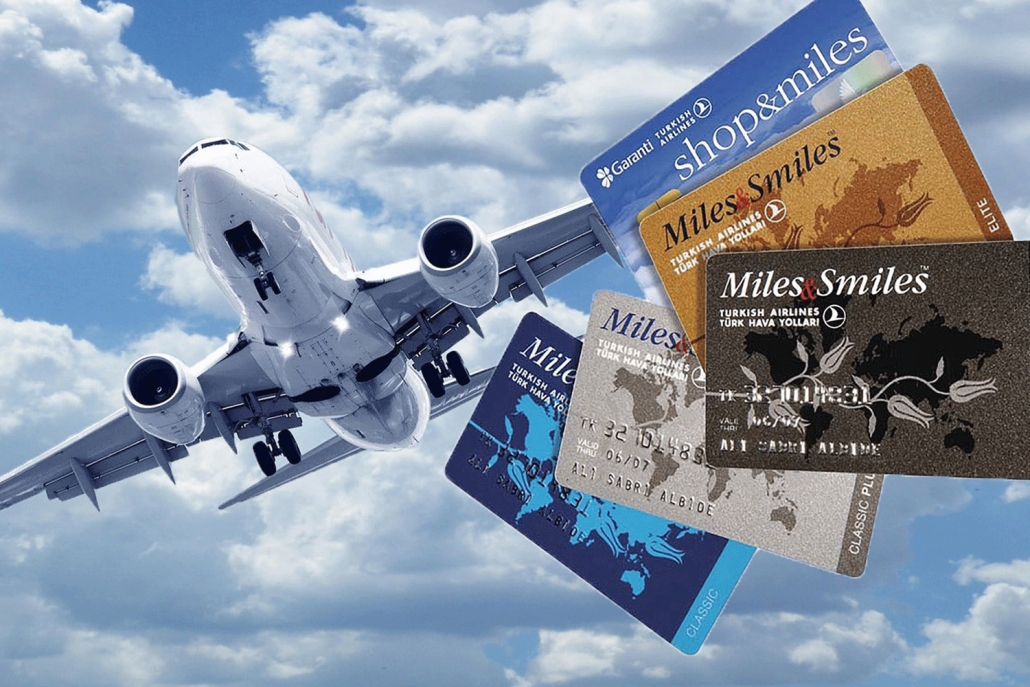Let’s talk about Credit Card Points and Miles Programs? The landscape of credit card rewards, airline miles, and hotel points has transformed dramatically over the past decade, creating unprecedented opportunities for savvy consumers to transform everyday spending into extraordinary travel experiences.
What began as simple airline loyalty programs has evolved into a complex ecosystem of transferable points, co-branded partnerships, and lifestyle rewards that can deliver thousands of dollars in value to informed participants.
This comprehensive guide will demystify the world of points and miles, providing you with the knowledge and strategies needed to maximize your rewards and transform your travel experiences.

Understanding the Fundamental Concepts about Credit Card Points and Miles Programs
The Three Pillars of Rewards Programs
The rewards landscape is built upon three fundamental currencies, each with its own unique characteristics and optimal uses. Understanding these distinctions is crucial for developing an effective rewards strategy that aligns with your lifestyle and goals.
Credit card points represent the most flexible and often valuable currency in the rewards ecosystem. These programs, operated by major financial institutions like Chase, American Express, and Citi, function as universal currencies that can be transformed into various forms of value.
What makes these points particularly powerful is their ability to transfer to multiple airline and hotel partners, often at favorable ratios. For example, a single Chase Ultimate Rewards point can be transferred to over a dozen different airline and hotel programs, providing unprecedented flexibility in how you use your rewards.
Additionally, these points often come with a guaranteed minimum redemption value when used through the card issuer’s travel portal, typically ranging from 1 to 1.5 cents per point, ensuring you always have a reliable baseline for your rewards.
Others points about Credit Card Points and Miles Programs
Airline miles, while more restrictive in their use, often provide the highest potential value when redeemed strategically for premium cabin international travel. These programs operate on complex award charts and routing rules that, while challenging to master, can yield extraordinary value.
For instance, a business class ticket to Europe that might cost $4,000 could be available for 60,000 miles, delivering nearly 7 cents per mile in value. Airlines have developed intricate partnerships and alliances that expand the utility of their miles far beyond the issuing carrier, creating opportunities for savvy travelers to leverage these relationships for maximum benefit.
Hotel points complete the trilogy of major rewards currencies, offering unique value propositions for travelers seeking luxury accommodations or extended stays.
These programs often provide the most straightforward value proposition: free nights at properties that might otherwise be prohibitively expensive. Premium hotel programs like World of Hyatt, Marriott Bonvoy, and Hilton Honors not only offer free stays but also provide elite status benefits that can significantly enhance the travel experience through room upgrades, breakfast benefits, and late checkouts.
The Art and Science of Earning Rewards
The process of accumulating points and miles has evolved into a sophisticated practice that extends far beyond simple credit card spending. Successful practitioners employ multiple strategies simultaneously to maximize their earnings potential and build substantial rewards balances quickly and efficiently.
Credit card spending remains the foundation of most earning strategies, but optimal execution requires careful attention to category bonuses and promotional opportunities. The most successful points enthusiasts typically maintain a portfolio of cards that complement each other, using different cards for different spending categories to maximize return on every purchase.
For example, one might use a Chase Sapphire Reserve for travel and dining purchases to earn 3X points, while using an American Express Gold Card for grocery purchases to earn 4X points. This strategic approach to category spending can dramatically accelerate points accumulation compared to using a single card for all purchases.
Shopping portals and airline dining programs represent an often-overlooked opportunity to substantially boost earnings on everyday purchases. These programs act as multipliers on regular spending, often offering additional points or miles on top of credit card rewards.
During promotional periods, it’s not uncommon to see returns of 10 points per dollar or more through shopping portals, creating opportunities to earn thousands of additional points on planned purchases. Similarly, airline dining programs can add 3-5 miles per dollar spent at participating restaurants, stacking with credit card rewards to generate impressive returns on dining expenditure.
Welcome bonuses deserve special attention as they often represent the fastest way to accumulate large quantities of points quickly. These offers, which typically require meeting specific spending thresholds within a set timeframe, can provide enough points for multiple domestic flights or even international business class travel from a single bonus.
However, successful manipulation of welcome bonus opportunities requires careful planning and attention to application rules and restrictions imposed by card issuers.
Advanced Strategies and Optimization Techniques – Credit Card Points and Miles Programs
Maximizing Redemption Value
The true art of points and miles lies not in their accumulation but in their intelligent redemption. Understanding how to extract maximum value from your rewards requires deep knowledge of program sweet spots, transfer partnerships, and seasonal variations in award availability.
Premium cabin international travel consistently represents one of the highest-value redemption opportunities, often delivering 3-7 cents per point in value when compared to cash prices. However, achieving these exceptional redemption values requires flexibility, advance planning, and often creative routing strategies.
Transfer partners play a crucial role in maximizing redemption value, as they allow you to exploit sweet spots across multiple programs.
For example, Virgin Atlantic’s partnership with All Nippon Airways (ANA) offers one of the most compelling sweet spots in the miles and points world, with round-trip business class flights between the US and Japan available for as few as 90,000 points – a fraction of what other programs charge. Understanding these relationships and opportunities allows sophisticated practitioners to extract extraordinary value from their points.
Building a Sustainable Long-term Strategy
Successful long-term participation in the points and miles ecosystem requires more than just knowledge of current opportunities; it demands a sustainable approach that balances reward maximization with practical considerations.
This includes maintaining excellent credit, managing application velocity to avoid issuer restrictions, and developing systems to track points, expiration dates, and redemption opportunities.
Organization becomes increasingly crucial as your involvement in multiple programs deepens. Sophisticated practitioners often maintain detailed spreadsheets tracking points balances, transfer ratios, expiration dates, and redemption goals.
This level of organization ensures no opportunities are missed and points don’t expire unused, while also facilitating strategic planning for future redemptions.
The Future of Points and Miles
The points and miles landscape continues to evolve rapidly, driven by technological innovation, changing consumer preferences, and shifting business models within the travel industry.
Digital integration is becoming increasingly seamless, with mobile wallets and apps providing real-time access to rewards and redemption opportunities. Sustainability considerations are also beginning to influence program design, with some providers offering green rewards and carbon offset options.
Blockchain technology and cryptocurrency integration represent the next frontier in loyalty programs, with several major players exploring ways to leverage these technologies to enhance program flexibility and value. While the exact shape of these developments remains to be seen, they promise to add new dimensions to how we earn and use travel rewards.
Conclusion: Building Your Rewards Strategy
Success in the points and miles world requires a combination of knowledge, strategy, and disciplined execution. By understanding the fundamental principles outlined in this guide and staying informed about program changes and opportunities, you can develop a rewarding points strategy that significantly enhances your travel experiences while providing excellent value for your spending.
Remember that the most successful practitioners approach points and miles as a long-term endeavor, continuously adapting their strategies as programs evolve and new opportunities emerge.
The key to success lies not in chasing every possible point or promotion, but in developing a sustainable strategy that aligns with your travel goals and lifestyle.
By focusing on high-value earning opportunities and strategic redemptions, while maintaining careful organization and program awareness, you can maximize the value of your participation in these programs while avoiding common pitfalls and disappointments.






